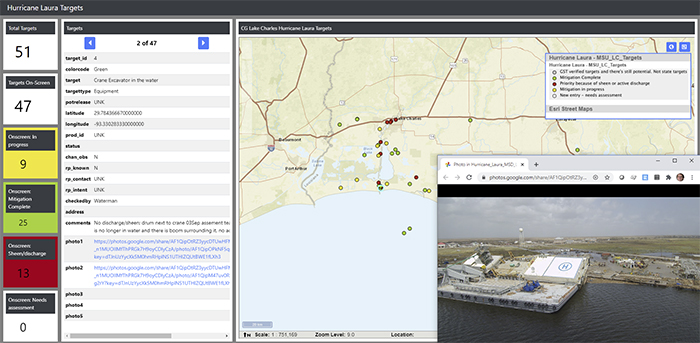Preparing for Hurricane Laura
SEPTEMBER 8, 2020 — Hurricane Laura came crashing into the shores of Southwest Louisiana and southeast Texas on Thursday morning, August 27, as a Category 4 storm. Prior to the storm making landfall near Cameron, Louisiana, OR&R's Emergency Response Division (ERD), and its Scientific Support team were busy coordinating support for the U.S. Coast Guard response.

They were ready to provide trajectory analysis to show where any spilled oil or chemicals may have gone, to identify specific targets from NOAA's National Geodetic Survey (NGS) imagery, and to ensure that access to the OR&R Spatial Data Branch's ERMA (Environmental Response Management Application) was set up as a common operational picture for multiple Coast Guard units to map any pollution incidents and other data.
Days before the storm hit, ERD staff had also coordinated with NOAA's National Environmental Satellite, Data, and Information Service (NESDIS) in order to be able to obtain satellite imagery immediately after the storm had passed through the region to analyze imagery for any damage to or pollution from offshore wells and platforms. Coordination was also taking place with our other federal partners in the Environmental Protection Agency and the U.S. Department of Interior to ensure readiness. The ERD team closely monitored the industrial areas in the cities of Port Arthur, Houston, and Galveston, Texas, as well as Lake Charles and Morgan City, Louisiana, for large pollution events. While there was substantial destruction of property that created many small spills and a substantial amount of debris to clean up, fortunately, the storm did not cause any major pollution events that threatened the environment or necessitated further involvement from the ERD team.
Hurricane season extends from June through November and we are now in the peak of the season, from mid-August to late October. So while the pressure is off temporarily, OR&R will remain poised for the next one.
For further information, contact John.Tarpley@noaa.gov.
